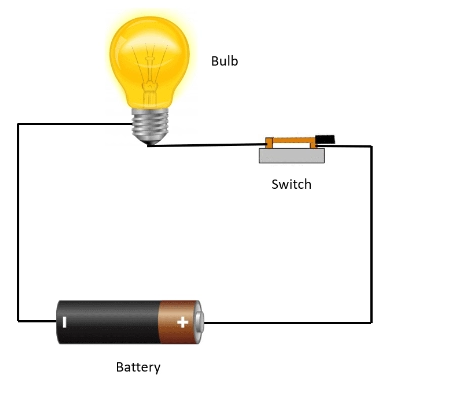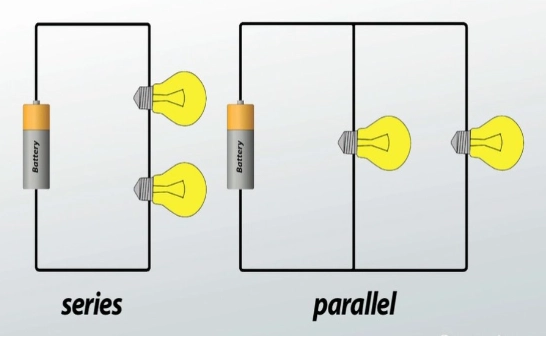Battery circuits are at the heart of many modern electronic devices, powering systems that are indispensable to our daily lives. These intricate networks of components control the flow of electrical energy from a power source to a load, enabling the operation of various electronic gadgets. This guide will explore the core principles of battery circuits, including their fundamentals, types, maintenance, and troubleshooting.
Part 1: The Basics of Battery Circuits
A battery circuit is a fundamental setup that allows electrical energy to flow from a power source (the battery) to a load, comprising conductive elements and various circuit components. This configuration is essential in a wide range of electronic devices and systems. Let’s break down its key elements:
1. Battery: The Power Source
A battery is a self-contained electrochemical cell that converts chemical energy into electrical energy. It may contain one or more electrochemical cells arranged in series or parallel. Each cell has a positive electrode (cathode, which is positive during discharge), and a negative electrode (anode, which is negative during discharge), and an electrolyte that facilitates the movement of ions between the electrodes during electrochemical reactions.
2. Load: Utilizing Electrical Energy
The load is the component or device that consumes electrical energy to perform a specific function. It can be a light bulb or a motor, or it can be a microcontroller or any device that requires power. The load is connected to the battery circuit to receive the generated electrical energy.
3. Conductive Elements: Wires and Connectors
Conductors, such as wires, connectors, and circuit board traces, provide a pathway for current to flow from the battery to the load and return. These elements ensure a low-resistance path for electrical transmission, minimizing energy loss within the circuit.
4. Switches and Controls
Switches and control mechanisms are often integrated into battery circuits. Switches allow users to control the current flow, enabling or disabling the circuit as needed. Control components, such as resistors or diodes, help regulate the current or voltage within the circuit.
5. Protection Elements
Protection elements such as fuses and circuit breakers are included to protect the circuit from overcurrent or short circuits. These devices safeguard the battery and connected devices from potential damage due to current surges.
6. Monitoring and Measurement Devices
In more advanced battery circuits, monitoring tools such as voltmeters, ammeters, or multimeters may be integrated. These instruments allow users to measure voltage, current, and other electrical parameters within the circuit, providing valuable diagnostic data.
Part 2: How Battery Circuits Work
The operation of a battery circuit involves several key processes that enable the flow of electrical current:
Movement of Electrons
Electrons, which are negatively charged particles, originate from the battery’s negative terminal and travel through the circuit to the positive terminal. This movement is driven by the potential difference created by the chemical reactions within the battery.
Conductive Pathway
Conductive components, such as wires or circuit board traces, form pathways for electron transmission. These pathways provide a low-resistance route, allowing electrons to flow with minimal energy loss.
Interaction with the Load
As electrons travel through the circuit, they encounter the load, which can be a light bulb, a motor, or another device. The electrons transfer energy to the load, driving the device’s operation.
Continuous Electron Flow
The continuous movement of electrons through the circuit creates an electrical current. The rate at which electrons flow determines the current’s intensity, which is measured in amperes (A).
Completing the Circuit
A closed circuit ensures a continuous flow of current, allowing energy to be delivered to the load and returned to the battery, guaranteeing the circuit’s proper operation.
For more insights on maintaining and optimizing battery performance, check out our LiFePO4 Battery User Maintenance Guide.
Understanding Electron Movement in Battery Circuits
Electrons move in a circuit, starting from the negative terminal of the battery, through the load, and then back to the positive terminal, completing the cycle.
The Role of Chemical Reactions in Batteries
Chemical reactions inside the battery generate a potential difference, which acts as the driving force for electron movement.
Voltage, Current, and Resistance in Battery Circuits
Voltage
- Definition: Voltage represents the electrical potential difference between two points in a circuit, measured in volts (V).
- Impact on the Circuit:
- Higher voltage batteries provide more potential energy per unit charge, thus influencing the overall power output.
- Voltage is the driving force that moves electrons through the circuit.
Current
- Definition: Current is the flow of electric charge, measured in amperes (A), representing the rate at which electrons move.
- Role in the Circuit:
- Current determines the intensity of electron movement, influencing how devices operate.
- Higher current values can allow devices to operate more stably, but excessive current can damage circuit components.
Resistance
- Definition: Resistance is the opposition to the flow of electrons in a circuit, measured in ohms (Ω).
- Impact on the Circuit:
- Resistance limits the flow of current, which affects the performance of the circuit.
- Components such as resistors or conductive materials increase the total resistance of the circuit.
Ohm’s Law
- Relationship Between Voltage, Current, and Resistance:
- Ohm’s Law (V = IR) explains the relationship between voltage (V), current (I), and resistance (R) in a circuit.
- That is, voltage is equal to current multiplied by resistance, a fundamental principle of circuit analysis.
Power Dissipation
- Impact of Voltage and Resistance:
- The interaction of voltage and resistance determines the power dissipated in a circuit.
- Higher voltage across a resistive component increases power dissipation, potentially shortening the component’s lifespan.
Types of Battery Circuits
Series Circuits
In a series circuit, multiple batteries or components are connected in a straight line, forming a single path for current to flow. The positive terminal of one battery connects to the negative terminal of the next, creating a continuous chain. In a series circuit, components or batteries share the same current, but the voltage distribution depends on the number of components.
- Characteristics and Advantages:
- Constant Current: The current remains the same throughout the circuit, flowing through each connected component.
- Cumulative Voltage: The total voltage in a series circuit is the sum of the voltages of each component, resulting in a higher total voltage output.
- Uniform Current Distribution: Each component experiences the same current, ensuring uniformity in operation.
- Balanced Voltage: Series-connected batteries can be used to achieve higher voltages while maintaining lower currents, making them ideal for specific applications.
Parallel Circuits
In a parallel circuit, batteries or components are connected side by side, each creating its own path for current to flow. The positive terminals of all components or batteries are connected together, and the negative terminals are connected together as well. Each component or battery receives the full voltage from the power source.
- Characteristics and Advantages:
- Different Current Paths: Current is distributed among the parallel branches, creating separate paths for each component.
- Constant Voltage: All components receive the same voltage as the power source, ensuring consistent performance.
- Redundancy and Reliability: If one component fails, the other components can still operate independently, increasing system reliability.
- Increased Current Capacity: Parallel connections provide a larger total current capacity, which is very beneficial in high-demand applications.
Battery Circuit Maintenance Procedures
Regular Checks:
- Periodically inspect battery terminals to ensure they are free from corrosion and debris.
- Check wiring and connections for signs of wear or damage, replacing or repairing them as needed.
Monitoring Voltage Levels:
- Regularly measure battery voltage using a voltmeter to ensure it remains within the optimal range.
- Promptly address significant voltage fluctuations or drops, as they may indicate underlying issues.
Cleaning and Maintenance:
- Use a mixture of baking soda and water to clean battery terminals and connections, removing any corrosion.
- Ensure batteries are stored in a clean, dry environment to prevent damage from moisture, contamination, etc.
Proper Charging Practices:
- Always follow manufacturer guidelines when charging batteries to avoid overcharging or undercharging.
- Use compatible chargers and adhere to recommended charging times to maintain battery health.
Troubleshooting Techniques
Identifying Voltage Issues:
- Use a multimeter to measure voltage drops within the circuit, to pinpoint potential problem areas.
- Test individual components to determine if any are causing significant voltage drops or anomalies.
Detecting Current Issues:
- Check the current flowing through the circuit to identify any abnormalities or sudden changes.
- Investigate components that draw excessive current, as this may indicate a fault.
Addressing Resistance Problems:
- Test the resistance of various parts of the circuit to identify high-resistance areas.
- Investigate components or connections causing increased resistance, which can lead to reduced efficiency.
Isolating Component Failures:
- Use systematic testing methods to isolate and identify faulty components.
- Replace or repair faulty components to ensure proper circuit operation.
Frequently Asked Questions
What is a battery eliminator circuit?
A battery eliminator circuit replaces a battery by providing a stable DC voltage source to power an alternative device or circuit.
How does a battery provide electrical energy to a circuit?
Batteries work by converting chemical energy into electrical energy. When connected to a circuit, chemical reactions within the battery release electrons, creating an electric current that flows through the circuit.
Why do battery starting circuits use thick wires?
Thick wires are used in battery starting circuits to handle the high current flow without overheating. The larger wire gauge reduces resistance, ensuring efficient power transfer from the battery to the starter.
Can a short circuit damage a battery?
Yes, a short circuit can damage a battery by allowing excessive current to flow. This generates heat, which can lead to electrolyte leakage, internal damage, or even rupture in extreme cases.
How does a battery create a potential difference in a circuit?
A battery creates a potential difference by having two terminals with different electrical potentials, which is a result of chemical reactions. When connected to a circuit, electrons flow from the anode to the cathode, creating a potential difference.
Lipo Battery Storage Voltage Explained
Storing your Lipo batteries at the correct voltage is essential for maximizing their lifespan. Maintaining a storage voltage between 3.7V–3.85V per cell ensures the stability of the ions inside the battery, minimizing degradation. This simple practice helps to extend the battery’s life and maintain optimal performance.
Understanding Lithium Battery Costs: What Influences Pricing?
The price of lithium batteries is a critical consideration across industries. This detailed analysis explores the factors driving pricing, trends shaping the market, and expectations for the future. Gain a clear understanding of the factors influencing lithium battery costs and their evolving market landscape. For a deeper dive into battery pricing, check out our battery storage solutions.
Liquid Metal Batteries vs. Lithium Batteries: A Detailed Comparison
Curious about how liquid metal batteries compare to traditional lithium batteries? Dive into this comprehensive comparison exploring the characteristics, applications, advantages, disadvantages, pricing, and future prospects of both technologies. Learn which option is best suited for your needs.
Lipo Battery Complete Guide: Capacity, Lifespan, and more
Unlock the full potential of your Lipo batteries with this in-depth guide. Understand key factors such as capacity, energy density, cycle life, and other important characteristics. Learn how to optimize battery performance while avoiding common pitfalls that can affect their cycle life.










